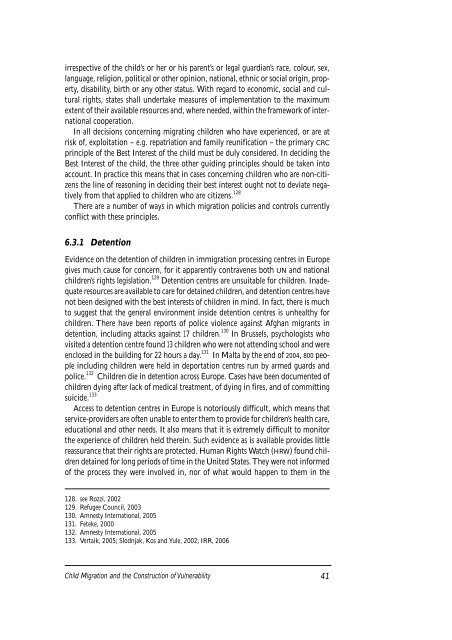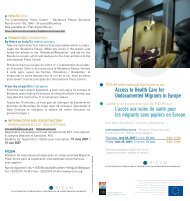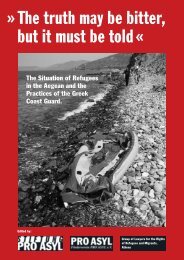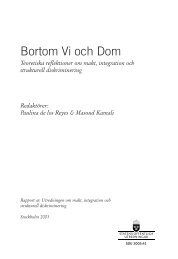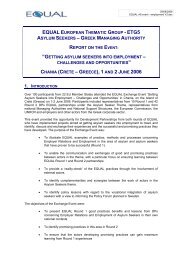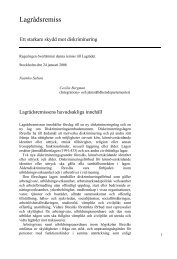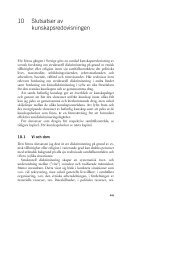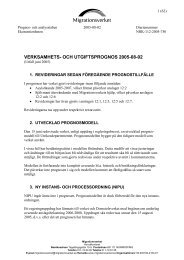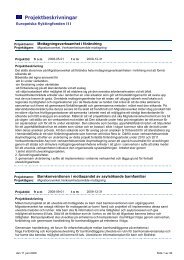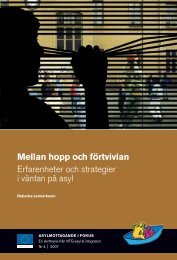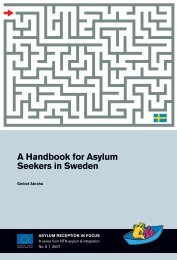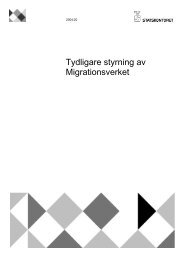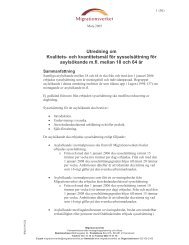and the Construction of Vulnerability - Child Trafficking
and the Construction of Vulnerability - Child Trafficking
and the Construction of Vulnerability - Child Trafficking
Create successful ePaper yourself
Turn your PDF publications into a flip-book with our unique Google optimized e-Paper software.
irrespective <strong>of</strong> <strong>the</strong> child’s or her or his parent’s or legal guardian’s race, colour, sex,<br />
language, religion, political or o<strong>the</strong>r opinion, national, ethnic or social origin, property,<br />
disability, birth or any o<strong>the</strong>r status. With regard to economic, social <strong>and</strong> cultural<br />
rights, states shall undertake measures <strong>of</strong> implementation to <strong>the</strong> maximum<br />
extent <strong>of</strong> <strong>the</strong>ir available resources <strong>and</strong>, where needed, within <strong>the</strong> framework <strong>of</strong> international<br />
cooperation.<br />
In all decisions concerning migrating children who have experienced, or are at<br />
risk <strong>of</strong>, exploitation – e.g. repatriation <strong>and</strong> family reunification – <strong>the</strong> primary CRC<br />
principle <strong>of</strong> <strong>the</strong> Best Interest <strong>of</strong> <strong>the</strong> child must be duly considered. In deciding <strong>the</strong><br />
Best Interest <strong>of</strong> <strong>the</strong> child, <strong>the</strong> three o<strong>the</strong>r guiding principles should be taken into<br />
account. In practice this means that in cases concerning children who are non-citizens<br />
<strong>the</strong> line <strong>of</strong> reasoning in deciding <strong>the</strong>ir best interest ought not to deviate negatively<br />
from that applied to children who are citizens. 128<br />
There are a number <strong>of</strong> ways in which migration policies <strong>and</strong> controls currently<br />
conflict with <strong>the</strong>se principles.<br />
6.3.1 Detention<br />
Evidence on <strong>the</strong> detention <strong>of</strong> children in immigration processing centres in Europe<br />
gives much cause for concern, for it apparently contravenes both UN <strong>and</strong> national<br />
children’s rights legislation. 129 Detention centres are unsuitable for children. Inadequate<br />
resources are available to care for detained children, <strong>and</strong> detention centres have<br />
not been designed with <strong>the</strong> best interests <strong>of</strong> children in mind. In fact, <strong>the</strong>re is much<br />
to suggest that <strong>the</strong> general environment inside detention centres is unhealthy for<br />
children. There have been reports <strong>of</strong> police violence against Afghan migrants in<br />
detention, including attacks against 17 children. 130 In Brussels, psychologists who<br />
visited a detention centre found 13 children who were not attending school <strong>and</strong> were<br />
enclosed in <strong>the</strong> building for 22 hours a day. 131 In Malta by <strong>the</strong> end <strong>of</strong> 2004, 800 people<br />
including children were held in deportation centres run by armed guards <strong>and</strong><br />
police. 132 <strong>Child</strong>ren die in detention across Europe. Cases have been documented <strong>of</strong><br />
children dying after lack <strong>of</strong> medical treatment, <strong>of</strong> dying in fires, <strong>and</strong> <strong>of</strong> committing<br />
suicide. 133<br />
Access to detention centres in Europe is notoriously difficult, which means that<br />
service-providers are <strong>of</strong>ten unable to enter <strong>the</strong>m to provide for children’s health care,<br />
educational <strong>and</strong> o<strong>the</strong>r needs. It also means that it is extremely difficult to monitor<br />
<strong>the</strong> experience <strong>of</strong> children held <strong>the</strong>rein. Such evidence as is available provides little<br />
reassurance that <strong>the</strong>ir rights are protected. Human Rights Watch (HRW) found children<br />
detained for long periods <strong>of</strong> time in <strong>the</strong> United States. They were not informed<br />
<strong>of</strong> <strong>the</strong> process <strong>the</strong>y were involved in, nor <strong>of</strong> what would happen to <strong>the</strong>m in <strong>the</strong><br />
128. see Rozzi, 2002<br />
129. Refugee Council, 2003<br />
130. Amnesty International, 2005<br />
131. Feteke, 2000<br />
132. Amnesty International, 2005<br />
133. Vertaik, 2005; Slodnjak, Kos <strong>and</strong> Yule, 2002; IRR, 2006<br />
<strong>Child</strong> Migration <strong>and</strong> <strong>the</strong> <strong>Construction</strong> <strong>of</strong> <strong>Vulnerability</strong><br />
41


